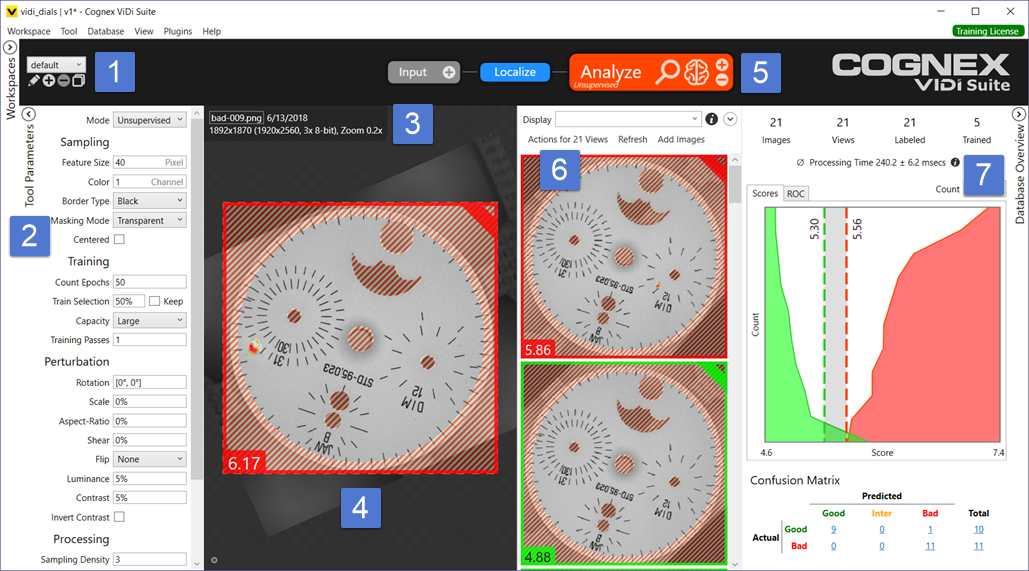


Of course, this involves first running each training image through the PMAlign tool to generate a transform for the View, as the fixture may move in each image.įor runtime, this procedure must be done for every incoming image so that the tool processes the fixtured View for that image, instead of the image itself. This ensures that the tool will be trained on a fixtured View for each training image, rather than the entire training image. Call the AddView method on the IManualRegionOfInterest to create the fixtured View, passing in a size and the Pose matrix.įor training, this procedure should be repeated for every training image before training the tool.Get the RegionOfInterest from the ViDi tool and cast it to IManualRegionOfInterest.Convert the Pose from CogTransform2DLinear to using the provided extension method.Manufacturing advantages Deep learning technology uses neural networks which mimic human intelligence to distinguish anomalies, parts, and characters while tolerating natural variations in complex patterns.

#Cognex vidi software
Get the Pose from the CogPMAlignResult. Cognex ViDi is the first deep learning-based software designed to solve these complicated applications for factory automation.There also exists an overload of AddView that will accept a CogTransform2DLinear instead of a Matrix.Ī ViDi tool can be fixtured with the PMAlign tool by doing the following:.The GUI handles this for you when you drag or rotate the ROI. If you are not using the GUI and you want to move the ROI from its default position (origin at the center point of the matched pattern), remember to combine the final Pose Matrix with a Matrix describing how the ROI should move from its default position (see illustrated example below).Passing a Size of (0.0,0.0) will cause the new View to default to the IManualRegionOfInterest's size.Remember to transform the PMAlign tool Pose into Pixel Space.The IManualRegionOfInterest interface exposes an AddView method, which accepts the Size of the View, as well as the Matrix transform.


 0 kommentar(er)
0 kommentar(er)
